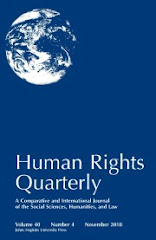Though international criminal law has made great strides in addressing harm perpetrated against women in wartime, its gendered structure diverts attention away from other significant harms that women endure as a result of armed conflict. In particular, international criminal law’s hierarchy of harm elevates crimes committed as part of a plan or pattern across political groups over equally serious forms of harm perpetrated randomly, often within political groups. Thus the private and opportunistic harms enabled by situations of displacement and perpetrated against female forced migrants do not fall clearly within the framework of international criminal law. This vacuum of accountability extends beyond international criminal law, as female forced migrants cannot rely on their own governments, their host governments, and often even international humanitarian organizations to protect them against opportunistic violence. International criminal law could fill the void only after quite serious reconstruction, namely expansion of its scope and restructuring of its focus. It may be that a structure designed specifically to prevent and account for opportunistic violence against female forced migrants would be better equipped to perform that task. Criminal accountability might be better performed in national legal systems or informal justice systems created within camp environments. There are also solutions other than criminal accountability, such as human rights law, that might be more appropriate in addressing such harms. In the meantime, until a solution is found that places these ‘private’ crimes on equal footing with ‘public’ attacks currently prohibited by international criminal law, the serious and frequent harms suffered by forcibly displaced women will continue to be overlooked, relegated to the bottom of the hierarchy of harm.
Friday, February 4, 2011
Ramji-Nogales: Questioning Hierarchies of Harm: Women, Forced Migration, and International Criminal Law
Jaya Ramji-Nogales (Temple Univ. - Law) has posted Questioning Hierarchies of Harm: Women, Forced Migration, and International Criminal Law (International Criminal Law Review, forthcoming). Here's the abstract:





